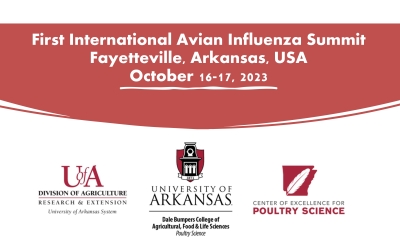Mexico's experience when vaccinating against Avian Influenza: Advantages, disadvantages, and needs
Authors: Magdalena Escorcia and Guillermo Tellez-Isaias
GMPC TOP
2023.
vol. 3, Iss. 1
pp:0-29
Doi: https://doi.org/10.51585/gtop.2023.1.0032

Abstract:
The experience. The silent entry of the Avian Influenza (AI) virus into Mexican territory, for the experience. In March 1994, a Low Pathogenicity (LP) subtype H5N2 virus entered Mexico stealthily and spread fast in poultry districts. The virus was common in flocks when discovered. It became an HP virus in December, jeopardizing food security. A biological was developed using biosafety. December 1995 saw HPAI-free nation. From January to December 1995, 383 million vaccinations were given. The biological was an intravenous emulsion-inactivated vaccine. Due to excessive mortality in two Altos de Jalisco districts, the National Emergency Device in Animal Health (DINESA) was established in June 2012, and the HPAI H7N3 subtype was determined as the cause. About 20 towns in Los Altos de Jalisco generate 80% of the region's eggs, with 70,000,000 birds and 40% of per capita consumption. This endangered national food security. A 2006 migratory duck virus was used to develop a vaccination, then a reverse genetics vaccine. Both vaccinations were inactivated and emulsified for parenteral administration. A recombinant vaccine was made from the Newcastle virus vector and HA protein insert. Final data: 22.4 million birds infected, 140 million vaccinated. Wild, backyard, and production birds had HPAI virus subtype H5N1 in October 2022. The outbreaks occurred in strategic poultry regions: the Yucatan Peninsula, where parent and reproductive farms are; Jalisco, which produces 54.84% of the nation's eggs and 15.60% of chickens; Sonora, which produces 7.88% of eggs, and Nuevo León which produces 2.8% of eggs and 1.82% of Control was achieved with two emulsified parenteral subunit and reverse genetics vaccinations. Following the outbreak, 201,652,000 doses were delivered. In April, authorities halted immunization against this subtype because there were no isolates, hoping to weaken antibodies and declare the country free. Advantages and disadvantages of vaccinating. Emulsified vaccines are the most common in Mexico to combat the infection. These vaccines provide robust systemic protection, protect against mortality and productivity drops, do not promote local IgA production or memory cell development, require continual revaccination, and do not prevent infection. Since local immunity is poor and delayed, emulsified vaccinations should be used with recombinant vaccines. Vaccinating in Mexico protects food safety and indirectly reduces zoonoses because vaccinated birds remove less virus. Main drawback: Vaccination can make the virus endemic. Needs. Mexico produces a lot of chicken and eggs; therefore, HPAI has been a major issue for the sector. If we keep vaccinating, our most urgent needs will be (1) new vaccines from seed viruses, which must be refreshed cyclically to match the challenge virus, (2) a biological that stimulates local neutralizing immunity (IgA), (3) bivalent or trivalent biologicals that facilitate flock management to protect productive parameters, and (4) diffusion of the information about viral behavior and vaccine use. Insufficient information is a dangerous weapon.
Keywords:
HPAI, LPAI, Mexico, Subunit vaccine, Immunity, DINESA, Hemagglutinin, IgA
Statistics:
Article Views: 1373
PDF Download: 11